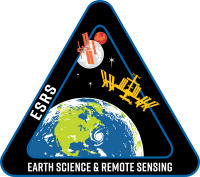ISS020-E-9011
| NASA Photo ID | ISS020-E-9011 |
| Focal Length | 400mm |
| Date taken | 2009.06.12 |
| Time taken | 22:10:17 GMT |
Resolutions offered for this image:
1000 x 697 pixels 540 x 376 pixels 720 x 480 pixels 4288 x 2929 pixels 640 x 437 pixels
1000 x 697 pixels 540 x 376 pixels 720 x 480 pixels 4288 x 2929 pixels 640 x 437 pixels
Cloud masks available for this image:
Country or Geographic Name: | SOUTH KOREA |
Features: | POHANG, HYEONGSAN RIVER, STEEL YARD |
| Features Found Using Machine Learning: | |
Cloud Cover Percentage: | 10 (1-10)% |
Sun Elevation Angle: | 24° |
Sun Azimuth: | 78° |
Camera: | Nikon D2Xs Electronic Still Camera |
Focal Length: | 400mm |
Camera Tilt: | 32 degrees |
Format: | 4288E: 4288 x 2848 pixel CMOS sensor, RGBG imager color filter |
Film Exposure: | |
| Additional Information | |
| Width | Height | Annotated | Cropped | Purpose | Links |
|---|---|---|---|---|---|
| 1000 pixels | 697 pixels | No | Yes | Earth From Space collection | Download Image |
| 540 pixels | 376 pixels | Yes | Yes | Earth From Space collection | Download Image |
| 720 pixels | 480 pixels | Yes | Yes | NASA's Earth Observatory web site | Download Image |
| 4288 pixels | 2929 pixels | No | No | Download Image | |
| 640 pixels | 437 pixels | No | No | Download Image |
Download Packaged File
Download a Google Earth KML for this Image
View photo footprint information
Download a GeoTIFF for this photo
Image Caption: Pohang, South Korea
The port city of Pohang is located on the eastern coastline of South Korea and provides access to the East Sea and Sea of Japan. In this astronaut photo from June 12, 2009, the urban fabric of Pohang is strikingly divided by the Hyeongsan River. To the west of the river, residential and commercial development is characterized by small-footprint, gray- and white-roofed buildings connected by a dense road network.
The eastern side of the river is dominated by industrial development associated with the Pohang Iron and Steel Company (POSCO) steelyard. This development (image center) includes large factory and storage buildings with striking light blue and light red rooftop. Green vegetated hills and mountains border the urban area to the east, west, and south, and several vegetated hills remain within the industrial area. Numerous boat wakes are also visible to the east-northeast of the POSCO steelyard docks.
While the Pohang area has been occupied by small fishing villages since approximately 1500 BC, development of an urban area only began in 1930 when harbor facilities were constructed. POSCO began construction of a large steel mill and associated facilities in 1968, with production of steel products commencing in 1972. The steel industry is still a major component of the city's economic base, but recent efforts to lessen dependance on heavy industry has fostered new interest in environmentalism and culture within Pohang.
The port city of Pohang is located on the eastern coastline of South Korea and provides access to the East Sea and Sea of Japan. In this astronaut photo from June 12, 2009, the urban fabric of Pohang is strikingly divided by the Hyeongsan River. To the west of the river, residential and commercial development is characterized by small-footprint, gray- and white-roofed buildings connected by a dense road network.
The eastern side of the river is dominated by industrial development associated with the Pohang Iron and Steel Company (POSCO) steelyard. This development (image center) includes large factory and storage buildings with striking light blue and light red rooftop. Green vegetated hills and mountains border the urban area to the east, west, and south, and several vegetated hills remain within the industrial area. Numerous boat wakes are also visible to the east-northeast of the POSCO steelyard docks.
While the Pohang area has been occupied by small fishing villages since approximately 1500 BC, development of an urban area only began in 1930 when harbor facilities were constructed. POSCO began construction of a large steel mill and associated facilities in 1968, with production of steel products commencing in 1972. The steel industry is still a major component of the city's economic base, but recent efforts to lessen dependance on heavy industry has fostered new interest in environmentalism and culture within Pohang.

